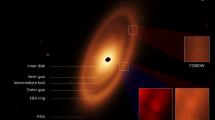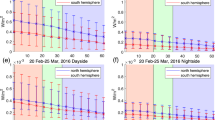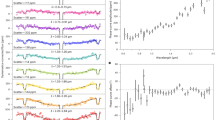Abstract
WILL you kindly permit me to correct an error which crept into my letter of last Monday on the aurora. The words “western” and “north-eastern” in the 14th line should have read respectively “eastern” and “north-western.” Allow me also to call attention to the present condition of Jupiter. On Thursday evening last the equatorial ochre-tinted belt was lighter in colour than I have seen it of late years, but much and distinctly mottled with light and dark clouding, two dark hanging spots on the upper edge, with adjoining elliptical bright patches, being conspicuous, while the lower dark madder-brown edge was very unequal, being swollen and thick about one-third to the right from the centre, and thinning off towards each end. The dark belt above the equatorial zone had two knots or thickenings of considerable size upon it, and the whole series of belts presented ragged and dentated edges, and, to use the apt phrase of a lady who saw them, had a “mountainous” look.
This is a preview of subscription content, access via your institution
Access options
Subscribe to this journal
Receive 51 print issues and online access
$199.00 per year
only $3.90 per issue
Buy this article
- Purchase on SpringerLink
- Instant access to full article PDF
Prices may be subject to local taxes which are calculated during checkout
Similar content being viewed by others
Author information
Authors and Affiliations
Rights and permissions
About this article
Cite this article
CAPRON, J. The Aurora of February 4. Nature 5, 303 (1872). https://doi.org/10.1038/005303b0
Issue date:
DOI: https://doi.org/10.1038/005303b0



